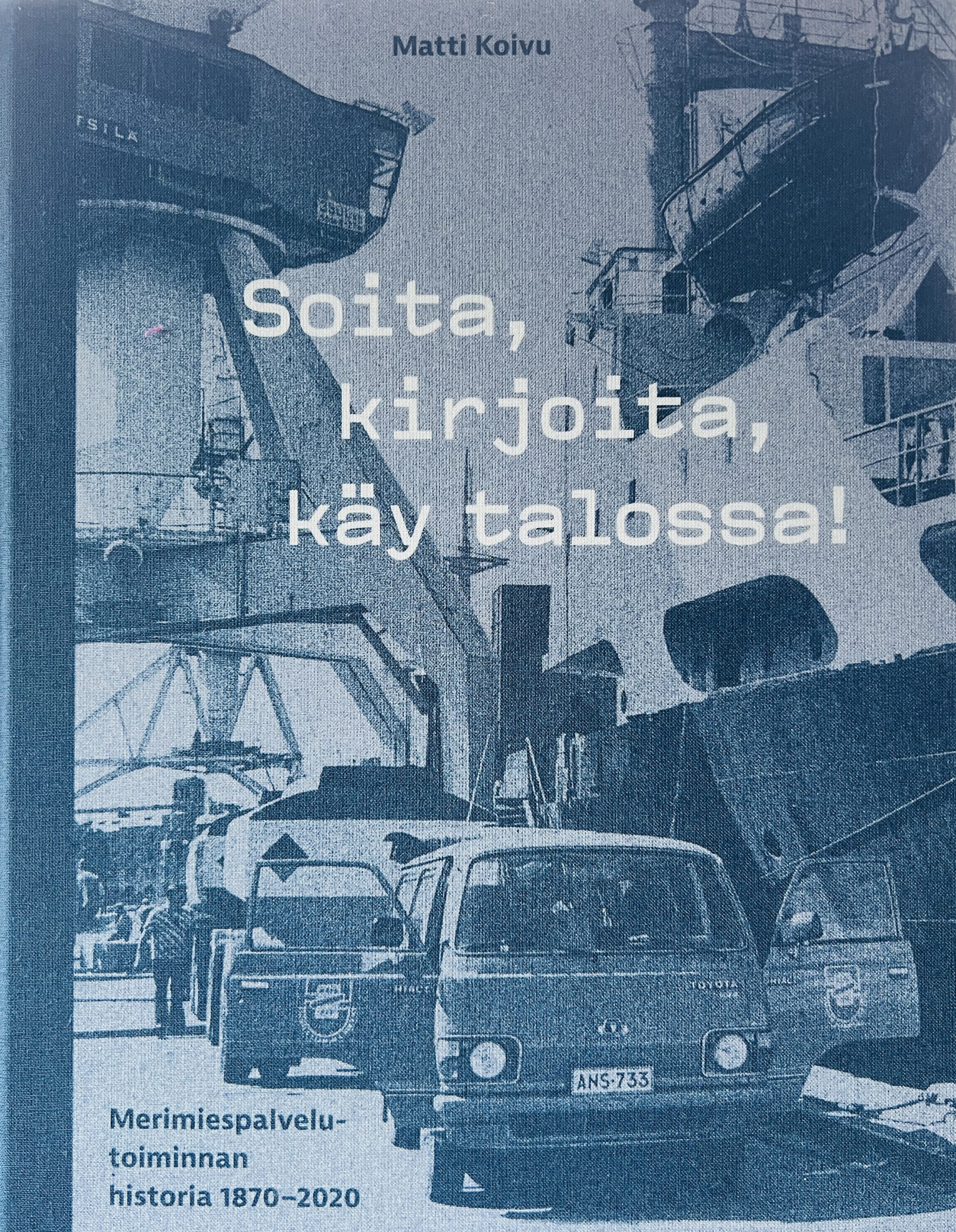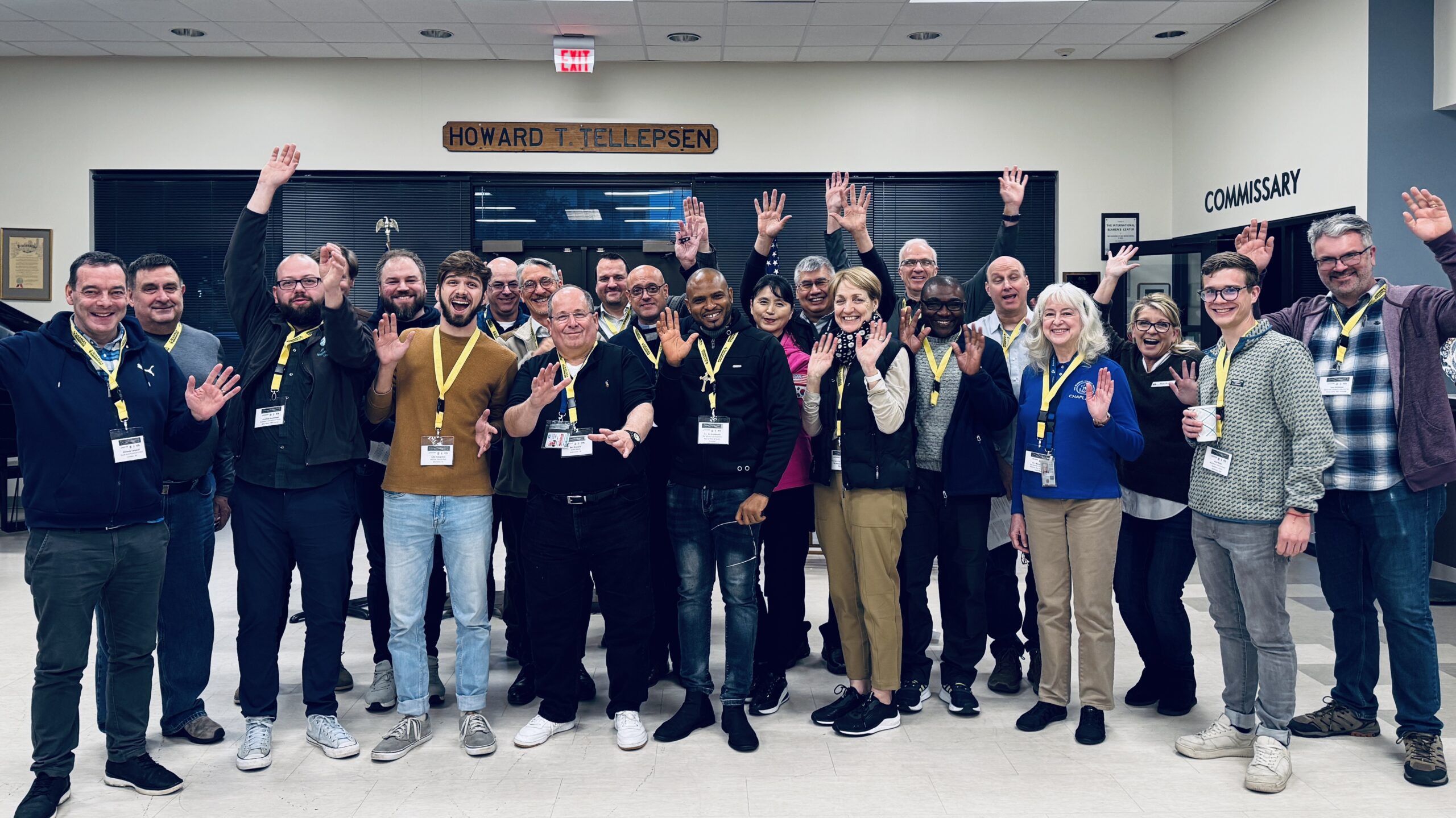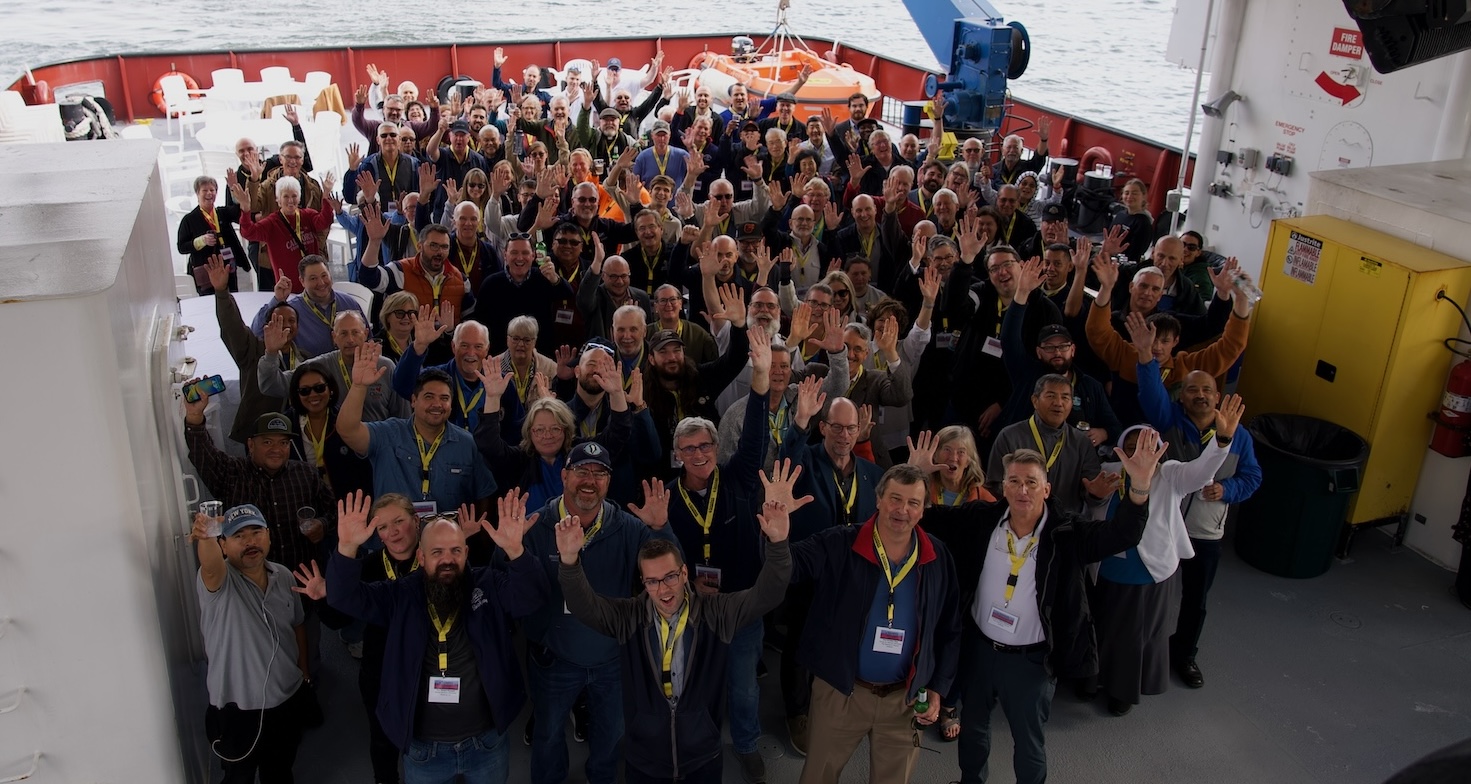Review by Jason Zuidema, NAMMA/ICMA
Matti Koivu, Soita, kirjoita, käy talossa! Merimiespalvelutoiminnan historia 1870-2020. Mepa, 2023. pp. 268.
This handsome book by Matti Koivu is published for the 50th anniversary of the Merimiespalvelutoimisto (MEPA), the Finnish Seamen’s Service. The title “Soita, kirjoita, käy talossa!” comes from the conclusion to each letter of MEPA’s first Executive Director in which he would write to his readers, “Call, write, visit us!”
With the help of Google Translate, I could read a fairly accurate translation of the original Finnish in English.
The book is based on thorough research and is not the typical institutional history which praises all decisions and developments. Koivu does chart the successes of the organisation but is also remarkably candid about the failures of personnel and partners. This makes the story much more interesting to read, and provides insight that can be useful even in our time.
Koivu sets the stage in the late 19th and early 20th century. Seafarers’ welfare in Finland at the time was the care of Church and private sailors’ homes. Though this was sufficient to confront the immediate challenges of alcohol abuse or seafarers’ poverty, it was not sufficient to address structural issues in the maritime world.
In the decades between and after the wars, with the founding and development of United Nations bodies, especially the ILO, Finland came to recognize its larger social obligations to seafarers. Under pressure especially from Finnish Unions in the 1950s, a Merchant Navy Service Council was formed in 1961 and existed until the formal founding of the Finnish Seamen’s Service in 1973. The key for both the Council and subsequently the Seamen’s Service was a secure funding scheme overseen by the government.
The Finnish Seamen’s Service was officially confirmed on June 8, 1972. The 1970s were a “golden era” of shipping in Finland. There was an increase in the number of Finnish seafarers and the whole shipping sector was doing well and expanding. As the shipping sector expanded, so did the Seamen’s Service. By the end of the decade, it had grown to more than 30 employees. Core programs of sports events and library facilities were well-used.
The money increased throughout the decade, but heading into the 1980s there was growing tension about how it was spent. Programs were being delivered because they could be, not necessarily because seafarers wanted them. Koivu writes that at the time, “It seemed that the seafarers didn’t really understand MEPA, and MEPA didn’t understand the seafarers.” (112). As the 1980s progressed, this challenge became a crisis as Finnish shipping headed into a downturn and the Seamen’s Service lost considerable revenue.
Stability for the organization came under the tenure of Martti Karlsson who served as Executive Director from 1986-2013. Karlsson kept a firmer grasp of the basic finances of the organization but also sought to tailor the programs of MEPA to the requests of seafarers. Additional support came as Finland became one of the countries to ratify ILO 163 “Seafarers’ Welfare” convention in 1987. This convention put more emphasis on support for seafarers’ welfare and gave MEPA a solid legal footing.
Koivu explains a key change in the mid-1990s as video services expanded: “The expansion of the video service showed a change in MEPA’s worldview, because the appeal of videos no longer tried to influence the social participation of seafarers. Now it was all about having fun and relaxing.” (171) Alongside video services, IT and language courses were also popular.
The 21st century has been marked by two major building projects. First, MEPA partnered with the Finnish Seamen’s Church to build a state-of-the-art seafarers’ centre in Vuosaari harbour near Helsinki. The building was lovely architecturally, but seafarers found it difficult to access. Koivu cites one local newspaper report when the centre opened, “the port of Vuosaari was called Vuosaari’s open prison, however with the difference that it is easier to escape from the open prison than from Vuosaari’s port.” (208) Second, through great challenge, MEPA successfully built a large new building in Helsinki that serves as a head office but also has rental flats that will bring revenue into the organization long-term.
Matti Koivu’s history of the Finnish Seamen’s Service is a fantastic resource to understand the story of seafarers’ welfare in one country, but also provides an insider’s view of how one organization navigated the cycles of the maritime economy. It is especially commendable for the honest portrayal of institutional strengths and weaknesses, something often lacking in other institutional histories.





